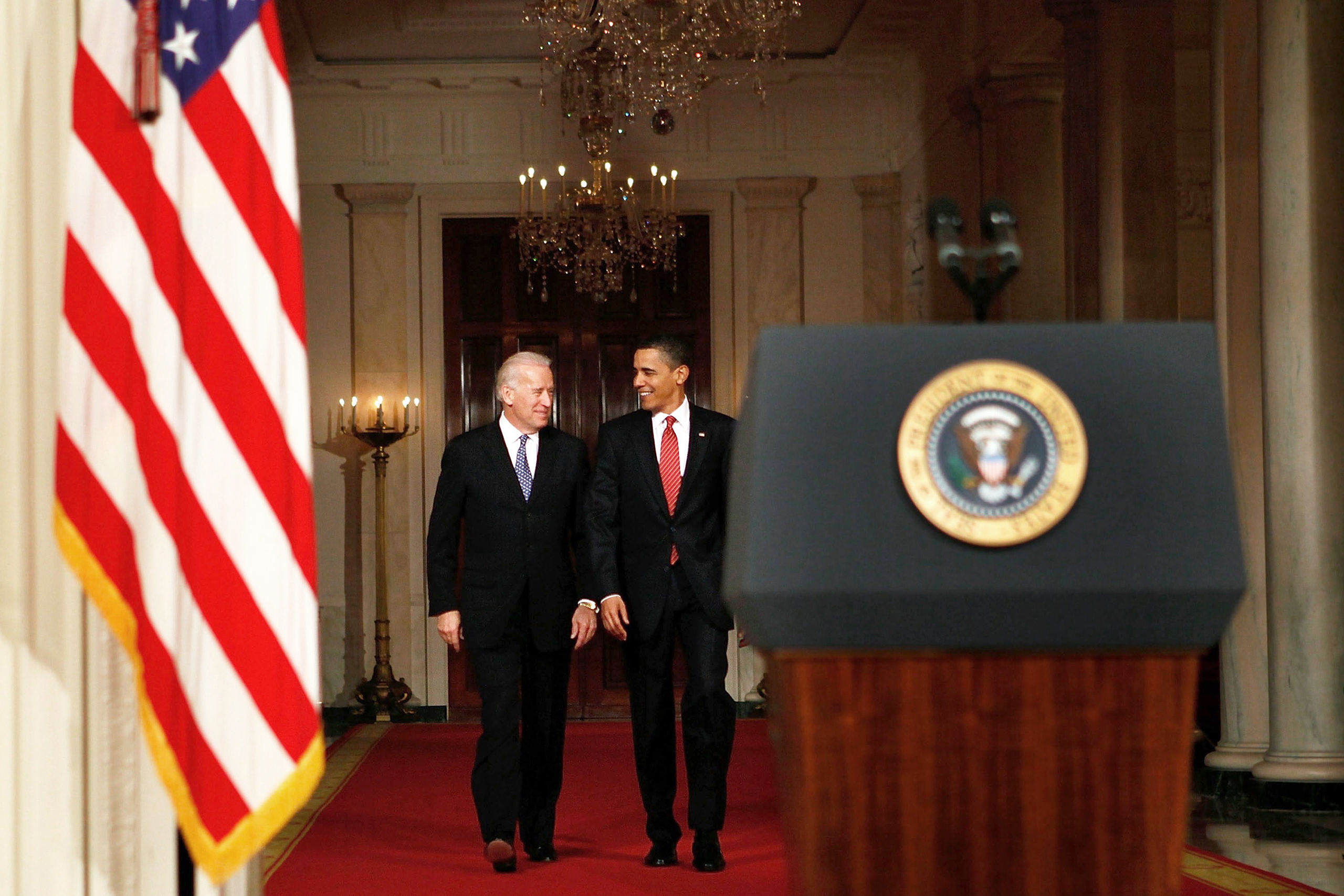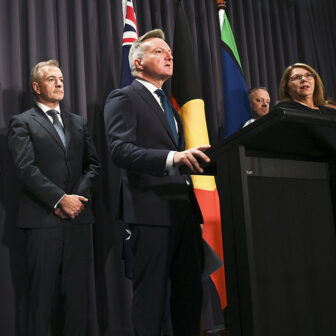At the signing of the Affordable Care Act in 2010, Joe Biden was caught on an open microphone telling president Barack Obama that the bill was a “big deal.” (There was actually an additional, more colourful word in the then vice-president’s pronouncement.) Thirteen years on and plenty of evidence is showing just how right Biden was — and how he has made Obamacare an even bigger (expletive) deal. Despite continuing opposition from federal and state Republican lawmakers, indeed their outright rejection, it continues to improve healthcare access for millions of Americans.
By the beginning of 2024 a record-breaking 21.3 million Americans had signed up for health coverage through Obamacare’s health insurance exchanges — five million more than a record high at the same time last year. Intriguingly, the largest increases have come in Republican-dominated states. In Florida, one in four people under the age of sixty-five are enrolled in an exchange plan; in Georgia, Texas, Utah and South Carolina the figure is more than one in ten.
Much of the recent increase can be attributed to the unwinding of Covid-era rules that made it easier to gain access to Medicaid, the healthcare scheme for people on low incomes. Under Biden, marketplace subsidies for health insurance premiums have been increased and eligibility widened, although this enhanced assistance will expire after 2025 without an extension from Congress. The administration has also boosted publicity about how the insurance exchanges work — publicity substantially reduced under Donald Trump — and removed a glitch that deprived some families of subsidies.
Fourteen years on, the data show that Obamacare is increasingly doing what Obama and the Democrats wanted — not just providing the security of health insurance but also reducing income inequality and racial disparities in healthcare. It has reduced the out-of-pocket costs of preventive healthcare for all Americans and the burden of medical spending on families, particularly those on low and middle incomes. America still doesn’t have the universal coverage standard in other wealthy nations, but some states, including Massachusetts and New York, are getting close.
Trump and Republicans in Congress couldn’t repeal Obamacare in 2017 largely because it had become too popular. It’s even more popular now. Around 60 per cent of Americans support the healthcare law and the figure is even higher for some of Obamacare’s specific provisions, including protections for pre-existing health conditions.
When Trump vowed late last year to “never give up” his call for Obamacare’s repeal — claiming it is “too expensive, and otherwise, not good healthcare” and promising to come up with “a much better, and less expensive, alternative!” — he was offering a campaign gift to Democrats. The promise, which Trump has made frequently since his 2016 campaign without ever detailing a replacement, has contributed significantly to Republican electoral defeats since then. On this issue he has failed to attract a groundswell of support even among Republicans: polling last December by independent healthcare analysts KFF showed that only 32 per cent of self-identified Republican voters considered it very important for candidates to talk about the future of Obamacare, compared with 70 per cent of Democrats.
But that same polling indicates voters are eager to hear the presidential candidates discuss healthcare affordability. Eight in ten voters describe this topic, and the future of Medicare (the federal insurance program for older people) and Medicaid, as “very important.” They regard access to mental healthcare as a healthcare priority too, along with prescription drug costs, gun violence, the opioid crisis, abortion and climate change. (The pandemic barely makes it to the list — only 22 per cent of those surveyed said it was very important.) All these issues and more show up among Biden’s election commitments, whereas Trump’s election statements are vague or absent. (A recent article from KFF Health News outlines what a second Trump presidency could look like for healthcare based on Trump’s previous record.)
Abortion, gun control, immigration, LGBTQ rights and climate change — all issues relating to health — are now seen as “litmus test” issues that drive voting choices. Ironically, though, the most potent policy decisions in these areas in recent years have been made not by elected politicians but by the courts, with the US Supreme Court, now dominated by conservative Trump appointees, as the final arbiter.
This sort of policy rule-making has not always worked well for Trump, Republicans or voters. A classic example is the US Supreme Court decision to overturn Roe v. Wade, the federal guarantee of abortion rights. This ruling delivered Trump and Republicans one of their most significant victories and one of their biggest political vulnerabilities.
Americans’ support for abortion is now at a record high; 69 per cent believe abortion should be legal in the first three months of pregnancy and 61 per cent think that overturning Roe v. Wade was a “bad thing.” Voter anger over abortion restrictions was widely credited with Democrats’ wins in the 2022 midterm elections. This is expected to be the case again in 2024, with abortion on the ballot in many states, even those where abortion rights are legally enshrined.
When asked which party best represents their views on abortion, more people say the Democratic Party (42 per cent) than the Republican Party (26 per cent). Women of reproductive age and young voters see abortion as a factor galvanising them to vote — and American women consistently vote more often than men. Some analysts believe angry Republican women could spell trouble for the party vote in 2024.
Litigation over abortion restrictions and access to reproductive health services is nevertheless proceeding in many Republican-controlled states, and the US Supreme Court is set to rule before November 2024 on two cases involving reproductive rights and healthcare: one on access to mifepristone, the pill used in more than half of US abortions, and another on emergency, life-saving abortions in hospital emergency departments.
Both Trump and his surviving rival in the primaries, Nikki Haley, struggle to articulate a coherent position on abortion that is acceptable to both conservative Republican Party officials and voters. Biden, by contrast, has put reproductive rights squarely in the middle of his re-election campaign. He has committed to enshrining abortion rights in federal law and has issued an executive order aimed at strengthening access to contraception.
The Affordable Care Act and its regulations guarantee coverage of preventive services, including birth control and contraceptive counselling, at no cost for women with health insurance. In 2020 the US Supreme Court upheld a Trump administration regulation that allowed employers with religious or moral objections to limit the birth control cover provided by Obamacare. Last month the Biden administration released proposed rules that would remove the moral exemption but retain the religious exemption, potentially restoring free contraception coverage to 126,000 women.
Abortion and contraception in the United States — a country where maternal and infant mortality rates and healthcare and pharmaceutical costs are shamefully high — are often economic decisions rather than moral or ideological ones. Even in some of the most conservative states with very few abortion services, rates of legal abortions are high. Access to reproductive healthcare services is crucial for many women, regardless of political affiliation, and especially those who are poor. Reproductive health researchers at the Guttmacher Institute say 75 per cent of American women seeking an abortion are either in poverty or just above the poverty line.
It’s worth noting that over the past forty years the sharpest drops in abortion rates have been under Democratic presidents, presumably because of their greater focus on delivering comprehensive healthcare services.
A study released in September 2023 by the Carnegie Endowment for International Peace provides an interesting insight into partisanship more broadly in the United States. Since the Tea Party era there has been almost no policy overlap between the two major parties in Congress (and the situation grows more partisan by the day). Among voters, by contrast, considerable agreement exists even on hot-button issues like abortion and guns.
But voters’ policy views are not strongly held and the American political system doesn’t easily allow them to express their policy preferences. What is strongly held is a sense of identity: what is referred to as emotional or affective polarisation. Voters don’t like people from the other political party — largely based on misbeliefs, misinformation and misperceptions — and will alter their policy preferences to match their partisan identities. In this respect, media like Fox News and Newsmax are seen as having a bigger impact than social media and political campaigns.
The fate of the Affordable Care Act sees two key issues — rising economic pressures and the polarisation of politicians and voters — come together. The act was initially very unpopular because of poor messaging from Democrats and misinformation and disinformation from Republicans and the conservative media. Confusion about a complicated law that took years to come into effect was widespread. And many Americans didn’t realise that the Affordable Care Act (which they liked) was the same as Obamacare (which they despised and/or feared), though those who benefited soon became supporters.
The situation in Florida (an increasingly Republican state) exemplifies the split. Florida has far more people enrolled in Obamacare’s federal health insurance marketplace than any other state. Floridians, bombarded with misinformation from then governor Rick Scott (“everyone now realises that Obamacare was a terrible notion”) and from current governor Ron DeSantis (who wants a healthcare plan that would “supersede” Obamacare), were initially loathe to take up government-subsidised health insurance, deriding it as “socialism.”
But Medicaid has never been expanded in Florida, which ranks among the five most expensive states for healthcare, many local employers don’t offer health insurance, and many retirees are younger than sixty-five and not yet eligible for Medicare. Obamacare offers affordable options for all these groups. Its increasing uptake and popularity has been driven by Republican-leaning Hispanics in the Miami area, where it’s described as “ingrained in the community” and the Obama campaign logo is routinely used to promote insurance.
Despite all this, a November poll showed Florida’s Hispanic voters backing Trump. While only 30 per cent of those surveyed indicated they would “definitely” or “probably” vote for Biden, 36 per cent opted for Trump. Results like these suggest that emotional polarisation will continue to drive voting patterns in November, even if this risks the loss of healthcare insurance and associated benefits.
On the upside, the Affordable Care Act no longer faces quite the same existential threat that once loomed. Despite Trump’s renewed threats, the scheme’s popularity continues to increase and Republican hostility is fading. It has become deeply embedded in the US healthcare system. (It would be no easy task to untangle its provisions from Medicare.) And it will be hard to sell voters a promise to take away the health insurance they know and value — even if there is a replacement, with all its own complicated and time-consuming details. •




